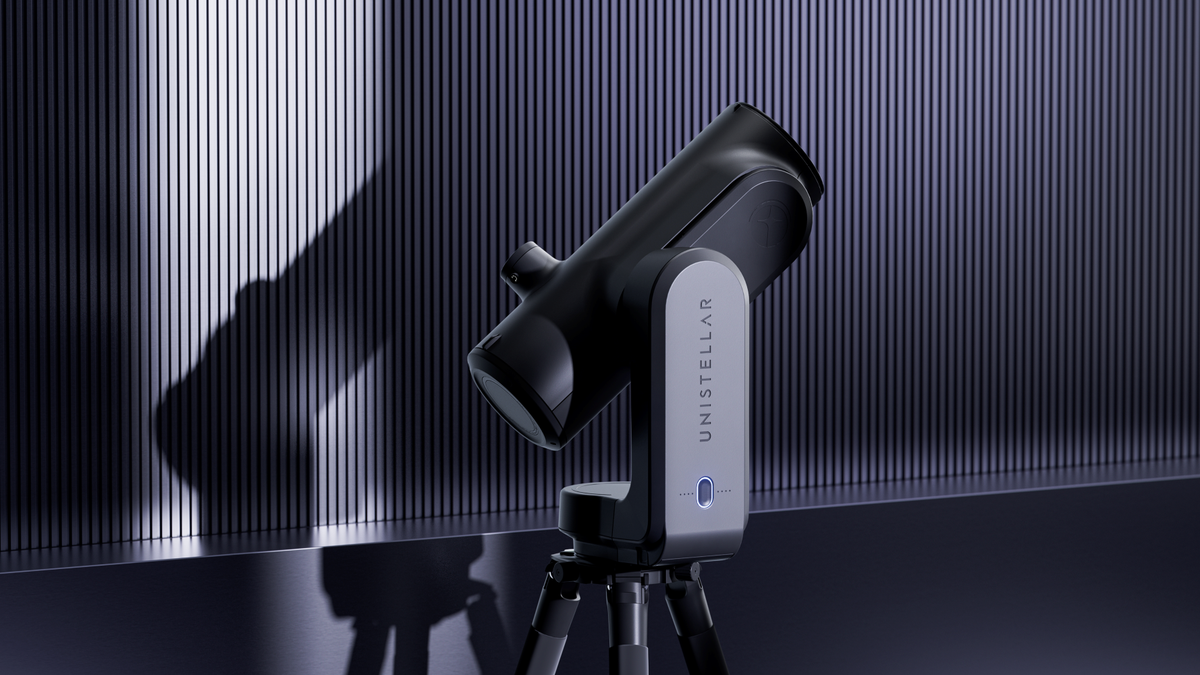
The winter nights may be long, but they don’t have to be dull, even for folks with small apartments who don’t have room for an extra big telescope. Unistellar’s latest telescope, the Odyssey, is half the size and less than half the weight of the company’s last big release from 2023. However, with a few taps on your phone, it still makes it easier than ever to zoom in on your favorite planet, star, nebula, or distant galaxy.
Last year’s Unistellar model, the eQuinox 2, also contained one long telescope that connects to users phones. Still, its biggest selling point was the light pollution filters that were supposed to make it a bit easier to see beyond the blank night skies of suburban or semi-urban environments. That model was also geared toward beginners, and it worked well in that regard during Gizmodo’s own tests, but Unistellar is promoting this latest telescope as being even better than before at helping amateur astronomers get started stargazing.
You see, where the company’s previous telescope was a digital reflector telescope, the $2,500 Odyssey is using mirror optics co-developed with lense-maker Nikon that still uses the company’s same automatic adjustment capabilities to find planets and stars by typing in the desired celestial object into the Unistellar app. Mirror telescopes normally require readjustment after use. However, Unistellar co-founder and CEO Laurent Marfisi told Gizmodo the Odyssey changes it up by containing sealed mirrors that don’t lose their optimization.
Marfisi said that the eQuinox was designed in such a way that foreign objects, like distant galaxies or nebulae, came in clear, whereas closer bodies, like planets, were slightly more out of focus. The big push for the Odyssey was to make it so both distant and closer objects came in with the same degree of clarity. The company calls this its “Multi-Depth Technology,” but it essentially automatically runs different light sensitivity and pixel resolution settings depending on the object you’re trying to view. The autofocus should make it a hands-off experience, getting the best focus settings whether the telescope is focused on Mars or the Dumbell Nebula.
The other big update this year is to the Unistellar app itself. The Unistellar CEO said the company adjusted it to offer more context and history about the moon, planet, or star they’re looking at.
The $2,500 Odyssey doesn’t have an eyepiece, so it will require that you connect your tablet or phone in order to gander at those far-off celestial objects. If you want something you can view with your own eyes, you’ll have to shell out $4,000 for the Odyssey Pro, which contains a Nikon digital eyepiece for those personal optics.
If you’re really hungry for something special, the fire engine red color version of the Odyssey Pro will set you back $4,500. It should be available starting Sunday on Unistellar’s site or other online retailers.
Gizmodo is reporting live on all the coolest and weirdest tech from the show floor all week at CES 2024 in Las Vegas. Be sure to check all the latest coverage right here.






